The Alien Trip Vol.02 Part 1 Official DIGGER Kana Yukawa and Kiara from Italy share their travel adventures at Okamoto Shopping Arcade in Higashi Nada.
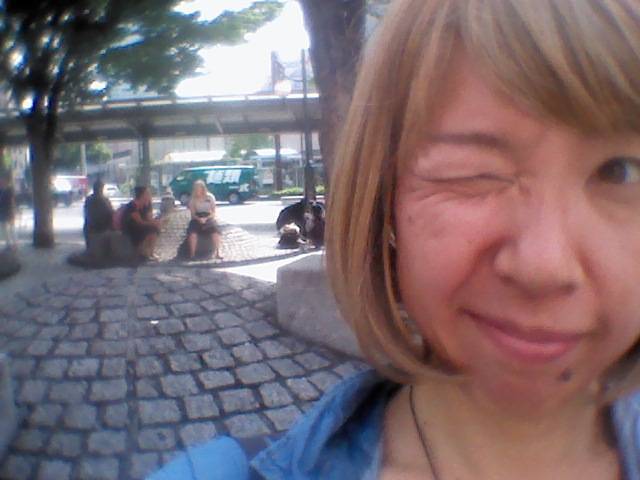
Your navigator for this alien trip is the official DIGGER Kana Yukawa who just returned from Spain. I hope you enjoy reading about my incident-filled adventure with an alien who sends reports to her home country about the trip full of misunderstandings and overlooked things due to the Latino mode I was in.
Oh! Higashi Nada.
It’s the easternmost place in Kobe City.
Nada Go Goh (Five Villages of Nada) has long been famous in Japan as the home of high-quality sake.
When Kobe and Ashiya Cities were founded, they both wanted to incorporate Nada Go Goh into their city because it was such a wealthy region. There was even a proposal to make it independent and call the region Konan City.
Kobe won by one vote, so Nada Go Goh was incorporated into this city. However, at this time, a region that should have been called “Nishi (west) Nada” had already taken the name “Nada” so with no choice left, Nada Go Goh was placed in “Higashi (east) Nada,” being called “Nada” since ancient times.
Too confusing!
Anyway, this Higashi Nada wouldn’t have been the Kobe area for this investigation if it had been incorporated into Ashiya or if it had become an independent city 60 years ago.
Our target area is Okamoto, the town representing wealth with the atmosphere of rich people and the place famous for cafés and sweets.
Here I am again, with my naturally blond hair, about to carry out my mission to dig deep!
Fellow moms who might encounter me in the condo elevator, please do me a big favor and pretend you don’t see me!
[Sankita Amore Square]
9:00 am, Paiyama, Sannomiya. I am to meet Kiara, my companion for today’s investigation.
She is from Bologna, Italy, where the world’s oldest university is located and one of the cities in Europe that represents intelligence.
After her dedicated studies in Japanese at University of Venice, she continued her studies at Hiroshima University. Currently she is a student at Osaka University.
She is an intelligent woman who has won an award for her research on Tomoe Yamashiro, a female scholar who committed to the protection of the vulnerable and of the rights of post-war female farmers.
By the way, the name “Kiara” apparently means intelligent in Italian.
As the name suggests, a cool-looking beautiful woman appeared a little late.
“I’m sorry! I wasn’t sure where Paiyama was.”
I wasn’t surprised.
Well, Paiyama is the name of the square with the bumpy hills on the north side of Hankyu Sannomiya Station East Exit or the JR Sannomiya Station West Exit.
Even I didn’t know the name until I started writing this series.
“I’m sorry. It must have been difficult to find Paiyama. The real name of the plaza is apparently “Sankita Amore Hiroba.” Before I even finished explaining, I realized how embarrassing it was to say this name to an Italian.
Besides, it’s commonly known as oppaiyama (breast mountains)!
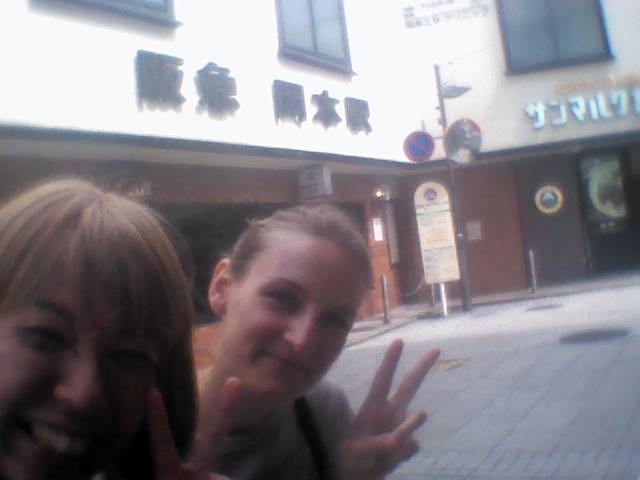
[Hankyu Okamoto Station]
From Sannomiya, if you get on the Hankyu Limited Express heading for Umeda, the next stop is already Okamoto.
It was the first time for Kiara to get off here.
No doubt Okamoto is one of the most expensive housing area in Hyogo Prefecture. I thought they would make the best use of the land, but to my surprise, there was no big station building. Besides, on the south side opposite the station was a house.
But of course, Okamoto is a town for cafés and sweets.
There was the café restaurant chain “San Marc Café,” directly connected to the station, and on the east side opposite the station was an old-style coffee shop “Café de Unique” right before us, as if we were being welcomed.
The names of the shops are both French, I think.
Kiara is fluent in Italian and I have a good command of Spanish, but neither of us understands French.
I got the impression that the names of most shops and buildings in Okamoto were French.
Oh, come to think of it, “Chocolat Republic” is first-half French and last-half English, isn’t it?

I thought, “Wow, Okamoto is filled with chic cafés!” but realized that more than half of them were actually beauty salons.
”When I’m in Japan, I have trouble telling at first glance whether a shop is a beauty salon or a café,” was Kiara’s comment.
In Kiara’s hometown Italy, some people may associate the barber shop with the bloody scene in Godfather, stabbing in the neck.
Certainly, beauty salons in Japan are chic-looking. And there are many beauty salons in Okamoto.
Besides, many of them “survive” the competition despite the number of such shops.
Kiara and I started walking on the stone-paved road of the non-arcaded shopping street, playing the game of guessing from a distance whether a shop was a café or a beauty salon.

[Hakkou Shokuhin Labo (Lab for Fermented Food) Cozy Café]
To the west of Hankyu Okamoto Station, in the corner of the Coop building, you can find a fluttering orange-dyed banner with some letters undyed, which spells “kouji” (fermented soybean paste).
Even Kiara, a researcher of Japanese literature, couldn’t read this kanji. The kanji for “rice” and “flower” put together spell kouji.
On the menu of Hakkou Shokuhin Labo Cozy Café there are several cafés made from sweet kouji used in amazake (drink made from kouji), sweets made from kouji and okara (soy pulp), and lunch dishes of hamburgers and roast beef using salty kouji.
On the counter is a popcorn machine making caramel popcorn using sweet kouji. And the sweet smell is tempting!
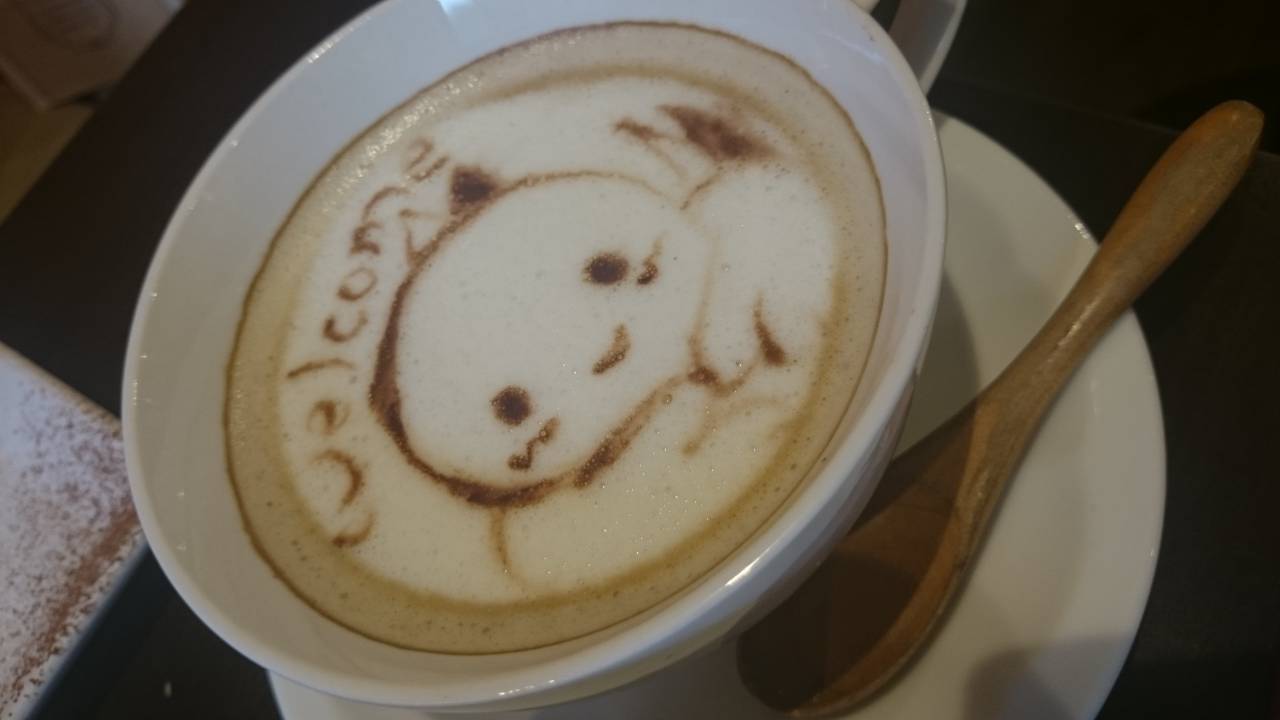
Because in the morning, I ordered sweet kouji latte, there’s a surprise! Topping the coffee is latte art of the yellow chick familiar to any Hyogo resident.
(Note: I checked and found out later that it was a phoenix that endlessly revives from earthquake disasters.
https://web.pref.hyogo.lg.jp/kk03/habatan_pro.html)

Beautiful shopkeeper Ms. Sayuri Eiraku was a former social worker at a hospital.
As she was working with many patients connecting them with society, she came up with the idea of establishing a community space were anyone can casually drop by.
She thought a café would be the right place for this.
At the core of this concept was the traditional Japanese food, kouji.
Traditional culture is dying out and miso doesn’t sell well anymore, but kouji is healthy and is safe to eat for people of all ages from babies to elderlies. It is also a beauty food♪
She wanted to give people the chance to remind themselves of Japanese traditional culture through the different items on the menu using kouji, a food that is about to be forgotten.
With such a hope in her heart, she opened the café in April 2014.
Latte sweetened with kouji instead of sugar is moderately sweet and very delicious!
Kiara, who came from the land of cafés, was amazed.
It’s a minute walk from Hankyu Okamoto Station.
In the back of the shop is a space for kids to play, a town library, and items for sale hand crafted by customers who frequent the shop.
It is a café where anyone could casually drop by.
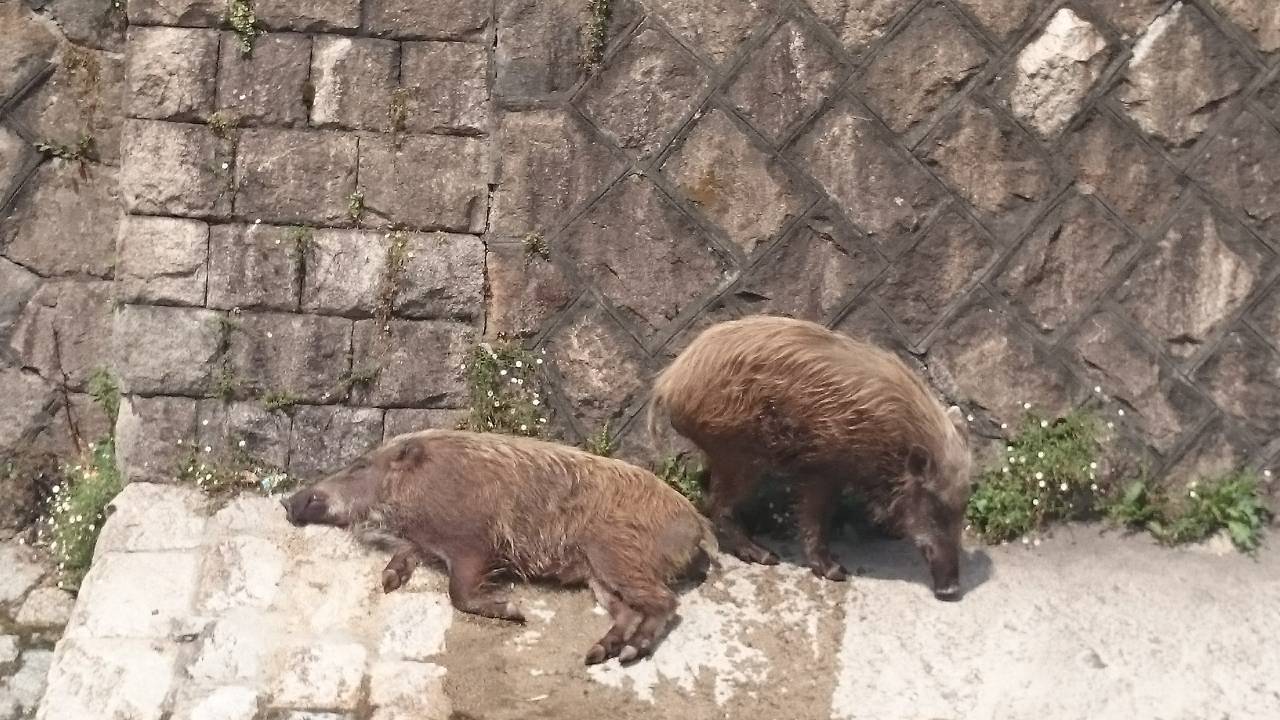
[Tenjogawa]
We were lucky to have Mr. Matsuda from Okamoto Shopping Center Promotion Association to show us around. We first went to Tenjogawa, the western tip of the shopping arcade.
“Oh, no! Dead?!”
Kiara shouted as she pointed at the wild boar lying at the bottom of the river.
Mr. Matsuda replied, “Don’t worry. He’s just taking a nap.”
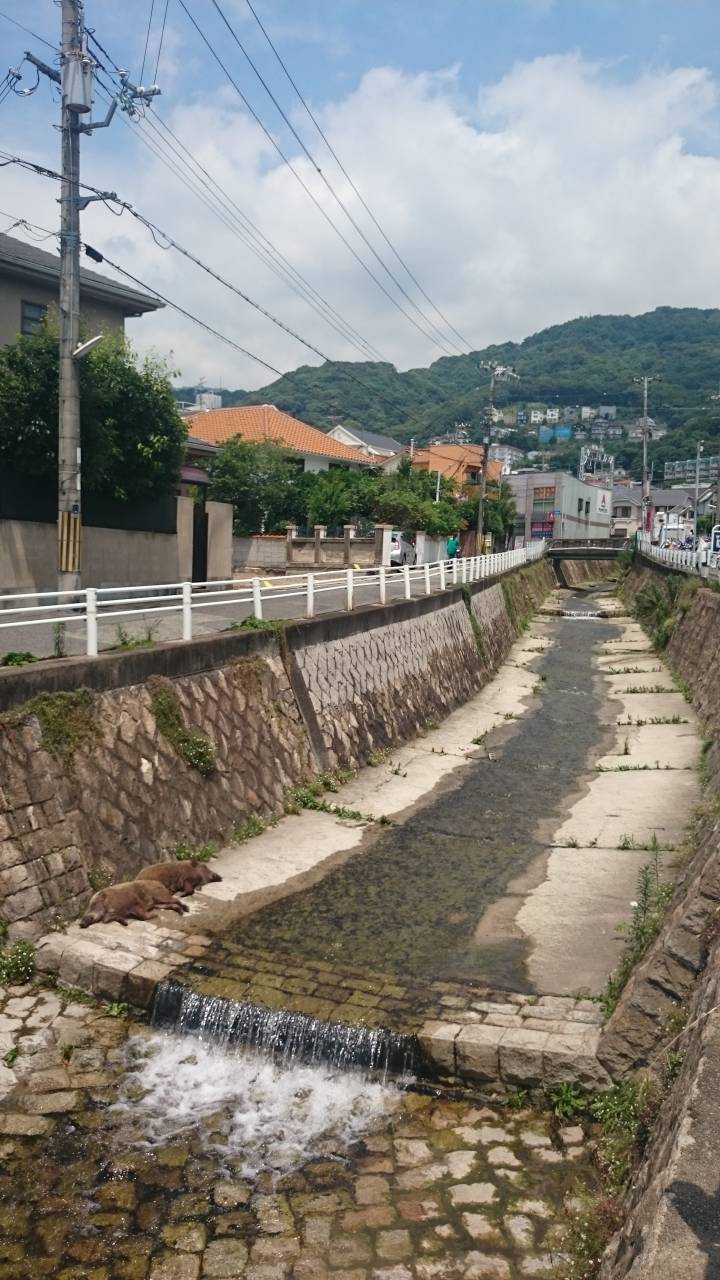
When you look upstream, you see a slope that leads to Mount Rokko.
This slope was once a plum grove.
Back then, people used to say “Go to Okamoto for plum blossoms, Yoshino for cherry blossoms, Kinokuni for tangerines, and Tamba for chestnuts,” and during plum viewing season there was even a special temporary JR station for people who came to view plum blossoms.
That was the original Okamoto. This is why there is a park called Okamoto Minami Koen (Okamoto South Park) on the south side of Hankyu Okamoto Station.
And this whole area extending to the south side of Okamoto is called Nada.
Of course, the wild boars napping and snoring peacefully on land beside the area with the highest residential land price in Hyogo prefecture couldn’t care less.
I repeat. They’re not dead!

[Hebosozuka (Heboso Mound)]
“Construct Hebosozuka in Okamoto at Osapa, she who weaves cloth is in Okamoto”
What?
This is just like Adamo-chan. You don’t get it? Pardon me.
There is an ordinary-looking parking lot along Tenjogawa.
In one corner appears a stone monument, to anyone’s surprise.
We were told that there used to be a zenpo koenfun here, a keyhole-shaped burial mound of the ancient Kofun Period (around 250-538 A.D.)
The above poem was engraved on the stone monument.
People say that even as early as the Edo Period (1603-1867), nobody knew the meaning of the song.
And of course today, after 300 years have passed, we still don’t understand.
Anyway, we’re finally here.
This mysterious song must be a message in ciphers about a plot that Kobe had.
The reason I say this is because in Okamoto there is a mysterious legend of the existence of a super ancient civilization “Katakamuna”.
I mean, really.
In 1949, a document written in the Katakamuna alphabet was discovered in Mount Kincho by someone on their way when climbing to Mount Rokko from Okamoto.
Years were spent to cipher this document, and it has been found that the document included truths about various things, from secrets about the creation of the cosmos to secrets of agricultural technology.
It is said that the current katakana alphabet has its roots in Katakamuna, the alphabet that existed as far back as the Jomon Period (around 14,000-300 B.C.)
You can even find it on Wikipedia.
https://ja.wikipedia.org/wiki/カタカムナ文明
So maybe the words osapa and heboso that make no sense to us mean something in Katakamuna…maybe.
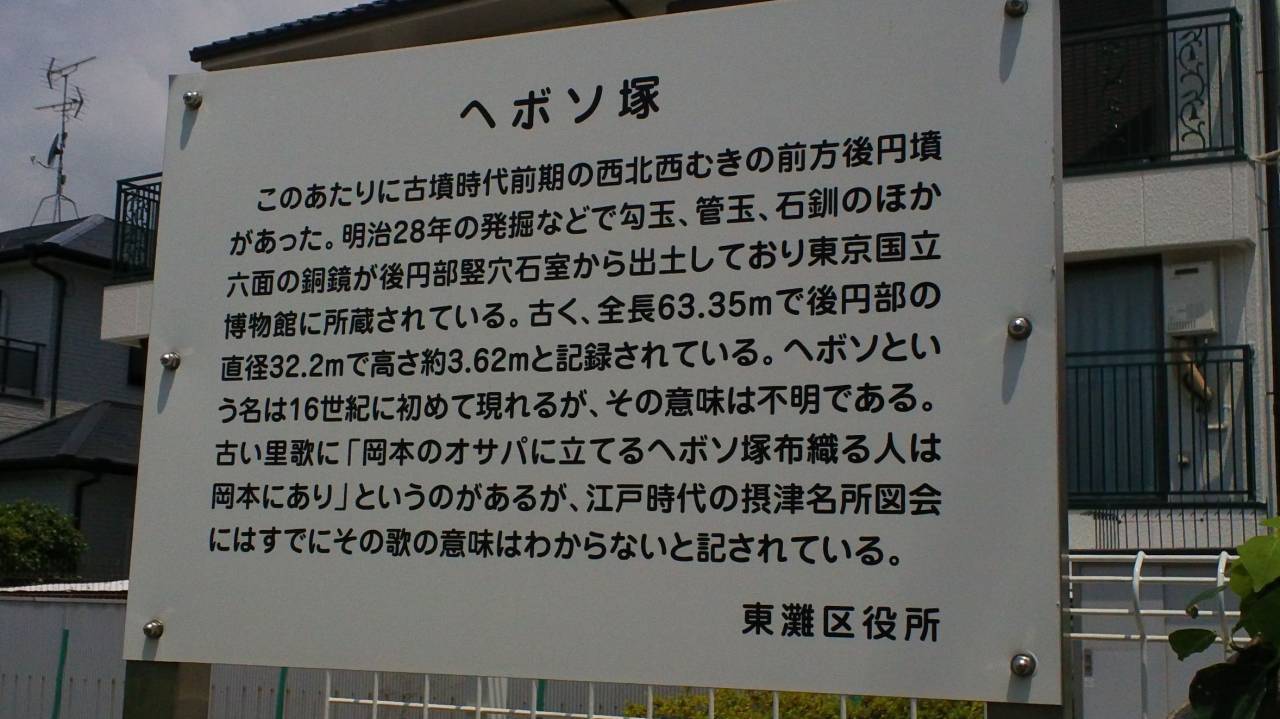
Anyway, you can find Hebosozuka in Okamoto.
FYI, in the midst of a condominium construction plan, this zenpo kouenfun was excavated and a nearby land owner bought this land and turned it into a parking lot to at least prevent further land development.
JR Settsu Motoyama Station was also constructed on willingly donated land by some land owner who requested the construction of a station.
Way to go, Okamoto.
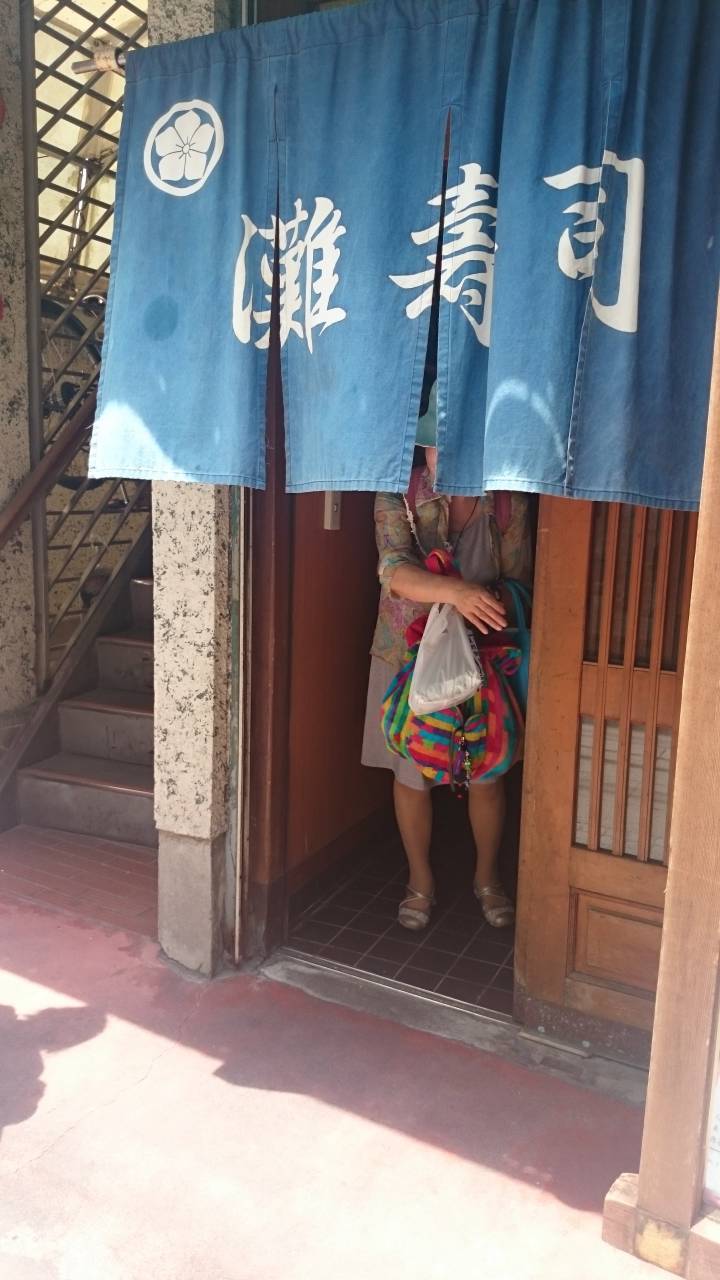
[Nada Sushi]
Kiara’s favorite is Japanese food.
So, instead of walking into one of the chic cafés lined up in Okamoto, we chose to walk through the noren curtain of an old sushi place.
JR Settsu Motoyama Station and Hankyu Okamoto Station are connected by Menuki Dori Street.
The shop is on the north side in front of the post office and bakery.
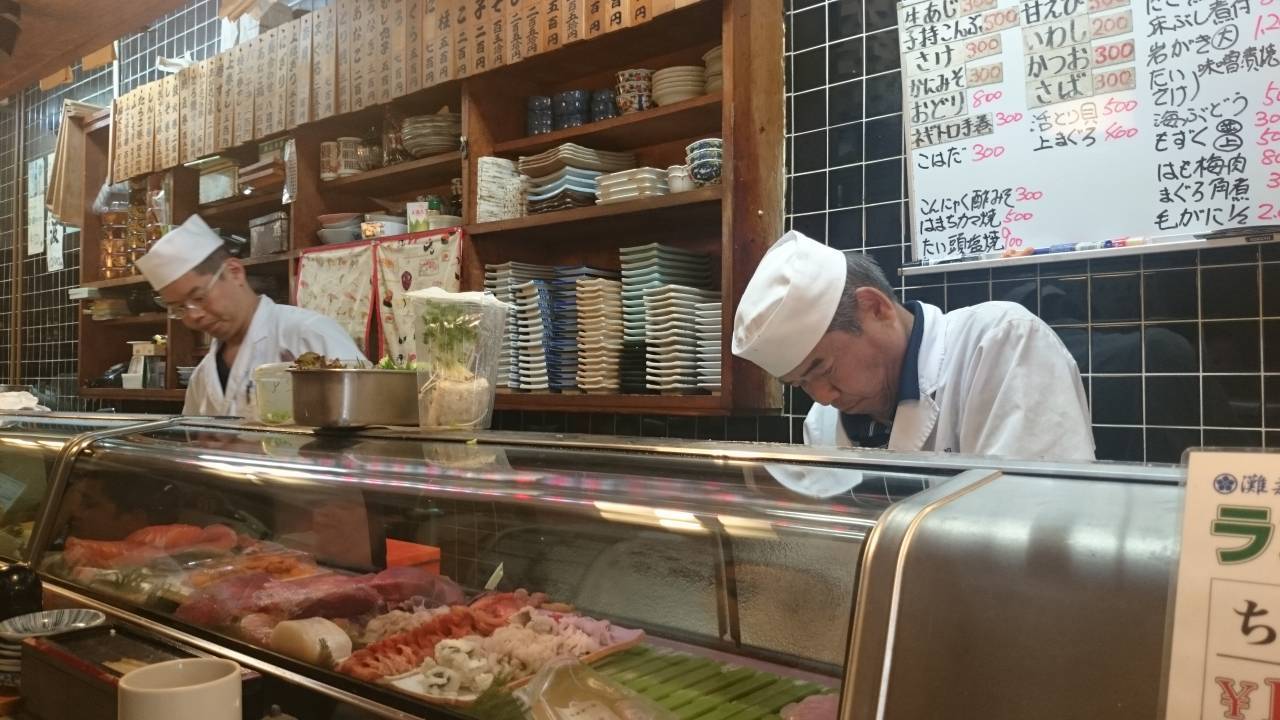
When we entered, we saw two men behind the counter making sushi. The one in front is the first generation Taisho, the sushi master. He opened the shop at this location at the age of 31, and it has been more than 40 years.
At that time, this place was a residential area.
In the back of the shop is the second generation Taisho, the son. It’s been 20 years since he has started working in this kitchen.
He left Kobe to go to university then worked as a businessman. It was at this time that the Great Hanshin Awaji Earthquake hit, and he was called back here.
Taisho and his wife had been working in tandem at the shop, but he lost her in the earthquake, and this was the reason for his son’s return.
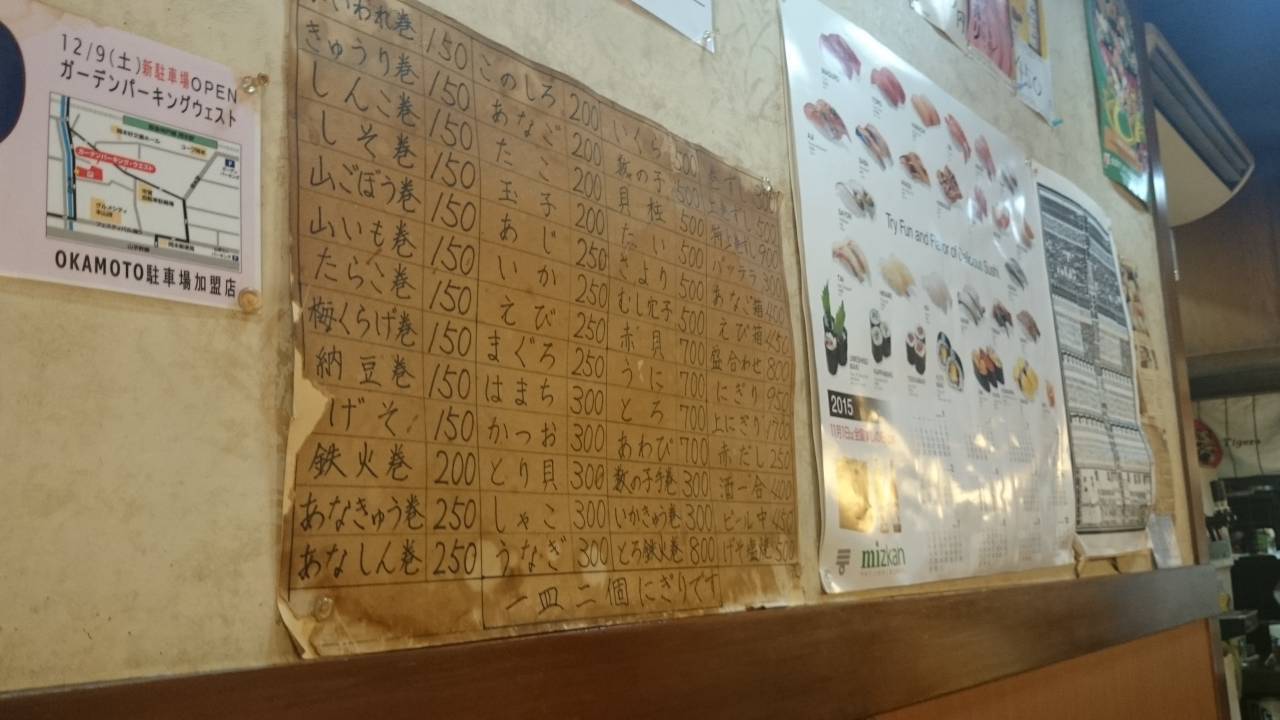
A menu whose color has turned to brown is posted on the wall.
Kyuri maki (cucumber roll): 150 yen, anago (salt-water eel): 200 yen, maguro (tuna): 250 yen, “Hito sara niko nigiri desu” (“Two pieces per plate”) is carefully and beautifully hand-written.
They didn’t want to change the menu that was hand-written by Taisho’s wife so the price of the sushi at Nadazushi remains unchanged since 20 years ago.
“I can’t help it. I don’t want to replace it because, look, she had such nice handwriting, didn’t she?”
I’d say it’s cheaper than a kaitenzushi (conveyor belt sushi), but for Taisho, memories are first priority. Oh, Taisho…! (tears)
And the lunch combo includes 8 sushi pieces, a choice of tekkamaki (tuna roll) or kappamaki (cucumber roll) and akadashi miso soup, all for 1000 yen. A portion enough to fill your stomach. Besides, tax is included. Oh, Taisho…! (tears)

“Buono!” says Kiara, who at first, wasn’t a big fan of gari (picked ginger) but now is.
Taisho’s personality is reflected on the sushi, very gentle to the tongue.

Lunch time on a weekday in the elegant town of Okamoto.
Customers enter, one after another, eventually occupying all the counter seats.
A middle-aged man in a suit who had a day off this day had sashimi and beer as starters.
A middle-aged woman with nicely set hair had sake and some tidbits as starters then some sushi of her choice.
A young man, who I guessed was a businessman, came in wiping off his sweat and ordered a lunch combo.
Taisho took his order and responded with a “Hei” (Yes, sir) and started making the sushi.
He has been doing this for 40 years.
The price on the menu hasn’t been changed for 20 years, but they can still go on like this.
And this, too, seems to be the power of the land of Okamoto that is making this possible.
(to be continued in Part 2)



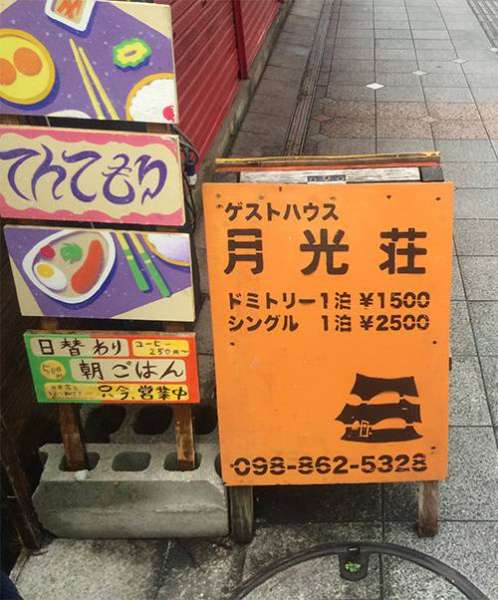
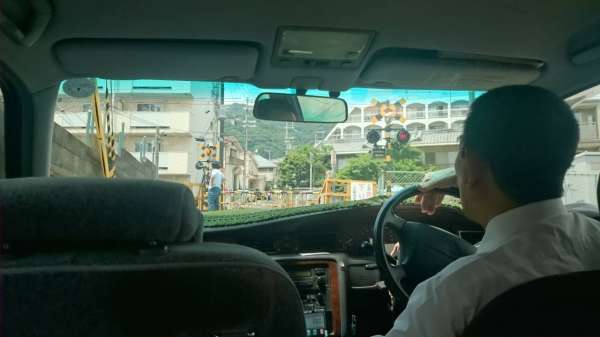
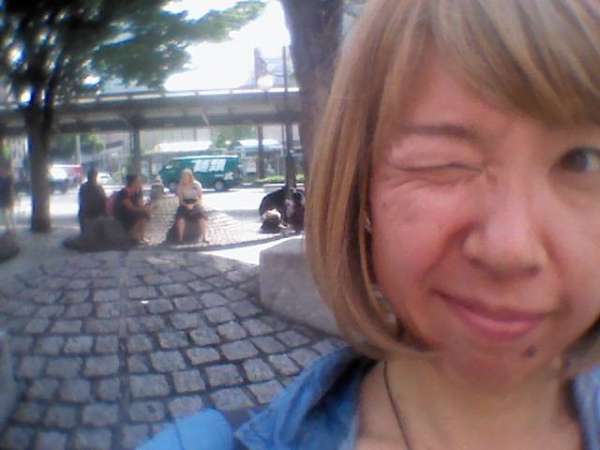

Comment
コメント
もっとコメントを読む